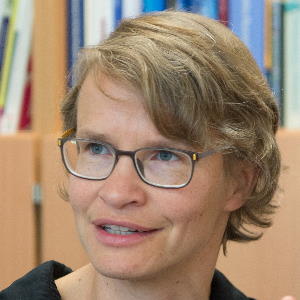Project B01
Can individual differences in auditory motor synchrony explain individual differences in language processing across the lifespan
PI(s): Prof. Dr. Isabell Wartenburger, Prof. Dr. Outi Tuomainen & Dr. Enikő Ladányi
Project B01 focuses on rhythmic features of speech and will investigate how individual differences in behavioral auditory-motor synchronization (tapping, speech-synchronization) explain variability in speech/language processing throughout the lifespan. For example, synchronization with speech rhythms is crucial for understanding speech in noisy environments, a skill that declines with age. For children, better rhythm abilities are linked to improved grammar skills. To test causal links, we will include a training study targeting auditory-motor synchronization and assessing its impact on speech/language processing.
in Phase 2
(In)Variability in prosodic cues and their incremental use in perception, production, and interaction
PI(s): Prof. Dr. Isabell Wartenburger & Prof. Dr. Outi Tuomainen & Dr. Sandra Hanne-Kloth
Prosody is central to successful communication. This project focuses on, first, the facilitative role and predictive function of prosody for language processing in individuals with aphasia and investigates whether and how their sentence comprehension abilities benefit from prosodic cues. Second, we strive to predict variability in prosodic cue production from variability in using prosodic cues in perception in unimpaired individuals. Third, we will investigate the sources and limits of variability in naturalistic interactive settings in younger and elderly unimpaired individuals. Overall, our project will contribute to a better understanding of the function of prosody and its representation in the linguistic system.
in Phase 1
Prosodic cue variability: Effects on spoken language comprehension and production in different populations
PI(s): Prof. Dr. Isabell Wartenburger & Dr. phil. Sandra Hanne-Kloth
This project investigates the limits of intra- and inter-individual variability in the comprehension and production of prosodic cues in structurally ambiguous sentences or utterances. We aim to characterize in more depth the internal organization of the prosody-syntax-interface as part of the mental grammar and to specify neuro-cognitive models of prosody processing. Specifically, we focus on the limits of variability in prosody production and prosody comprehension using different linguistic structures (coordinate name sequences, locally/globally ambiguous sentences) in different populations (healthy young and elderly adults, individuals with left or right hemispheric brain damage).
We found a rather stable linguistic behaviour in the production of prosodic cues in coordinate name sequences, both with or without internal grouping, in younger adults: prosodic cues (i.e., pre-boundary lengthening, f0-rise, pause) are used in a relatively consistent way to mark the internal grouping of name sequences across individuals and within individuals (i.e., when talking to different interlocutors). Furthermore, all three prosodic cues seem to be relevant, none of them is used in isolation to mark the underlying syntactic structure. We conclude that prosodic cues are resistant to influences of cognitive factors (inter-individual differences) and/or social situations (intra-individual differences, e.g., when talking to different interlocutors). Our data are in line with the Proximity/Similarity-Model of Kentner & Fery (2013, The Linguistic Review). Regarding the prosodic realization and differentiation of locally ambiguous OVS and SVO sentences, we find a more variable behaviour: only some speakers use specific f0 contours to distinguish between these sentence types. Furthermore, for those speakers who used specific f0 contours to distinguish between the two sentences types, we found a high inter- and intra-individual variability with respect to the distinctive f0 contours they employed. In individuals with right- and left-hemispheric lesions, we find that both groups are impaired in the comprehension and production of prosodic cues (pre-boundary lengthening, f0-rise, pause) in coordinate sequences. In comprehension, we found both groups of participants to mainly rely on the pause cue (in line with Aasland & Baum, 2003, Brain and Language). Comprehension and production of prosodic cues were found to markedly vary between participants. Additionally, some individuals’ performance in comprehension clearly differed from their production of prosodic cues. These findings speak against clear lateralization hypotheses of prosody to either the left or right hemisphere.
Members



